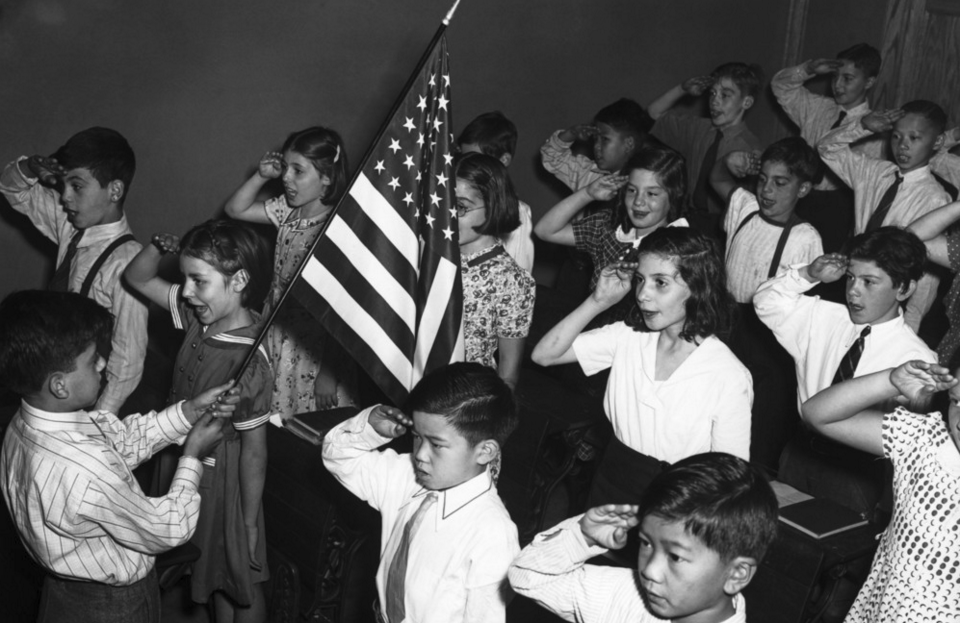In his Essay on the Development of Christian Doctrine, John Henry Newman famously listed 7 tests (“notes”) of a truly living and developing idea.
His third test was the “Power of Assimilation,” which he described as follows:
“[D]octrines and views which relate to man are not placed in a void, but in the crowded world, and make way for themselves by interpenetration, and develop by absorption… [An idea’s] life is proved by this capacity of expansion, without disarrangement or dissolution… A living idea becomes many, yet remains one.”
Currently in the United States, there is much fear about potentially expanding the number of immigrants to the country. Some of this fear is due to concerns about the suspected economic strain of immigrants. And then, there are safety concerns, which you are seeing on display today with the question of accepting Syrian refugees.
But at least some of the fear surrounding immigration is due to the perceived fragility of American identity, or, America’s lack of will to assimilate.
Actually, this fear has been present throughout American history. In the decades following the American Revolution, it was felt that the survival of the Republic depended upon fashioning a distinctively American identity to be communicated through newly developed institutions, especially in the area of education. As Horace Mann, the father of the Common School Movement, wrote, “It may be an easy thing to make a republic, but it is a very laborious thing to make republicans.”

[Anti-immigration cartoon from 1889]
And 19th century fears about the assimilation of immigrants are really what allowed Mann’s Common School Movement to succeed. As education historian Charles Glenn explains:
“It is the growing immigration – and the fears that it elicited – that explains why the common school came to have such a ‘mythical’ significance in nineteenth-century America… Absent a national church, a monarchy, an external threat, there seemed little to hold the new nation together… The common school as imagined by Horace Mann would be above religious and political division and would teach students higher motivations than ‘emulation.’”
For many years, American schools arguably accomplished their task of assimilating immigrants through civic education. However, Glenn concludes that most of the assimilating process seems to have happened organically, as a result of “societal forces and the reality of opportunities available to those who become proficient in English.”
In an article for The Atlantic entitled “Why the U.S. Is So Good at Turning Immigrants Into Americans,” Jason Deparle provides the following reasons:
- “Compared with Europe, the U.S. attracts more immigrants who share the dominant faith.”
- “An economy that, until recently, had lots of entry-level jobs.”
- “American schools generally provide students second chances.”
- “The civil-rights movement… bequeathed a robust apparatus for promoting opportunity.”
- “American culture sells, in all its tawdriness and splendor.”
Yet, among conservatives, there are fears that immigrants are no longer being assimilated in the supposed deeper ideals that underlie American identity. After conducting a 2013 survey, the Hudson Institute concluded that “a large ‘patriotic gap’ exists between native-born citizens and immigrant citizens on issues of patriotic attachment and civic knowledge.” This fear was also on display earlier this year over conservative scholars’ objection that the new AP US History standards did not seek to instill “American exceptionalism.”
And perhaps their fears have some merit. Historian Christopher Dawson maintained that a failure to assimilate at a deeper level was a principal cause of the fall of the Roman Empire:
“The Roman Empire had never possessed a really homogeneous culture like that, for example, of China. It was an artificial union of alien social organisms which had been brought together by an amazing effort of military and administrative organization. In the East Rome inherited the debris of the Oriental and Hellenistic monarchies, while in the West she conquered and assimilated the tribal society of the European barbarians. It is true that there was a real community of culture between the Latin cities of the West and the Hellenistic cities of the East. But it was a superficial cosmopolitan civilization which was limited to a privileged class, a society of consumers based on slave labour and the exploitation of subject classes and peoples. As soon as this privileged class was ruined by the economic crises of the third century and the loss of its political privileges, the underlying diversity between the barbarians of the East and the barbarians of the West emerged as strong as ever.”
The Dawson passage above should give Americans pause when thinking about immigration. If America is truly “exceptional,” if it is built on a foundation of deep and impeachable ideas that still permeate the culture, it should be confident in its power to assimilate immigrants to this country. If not, however, if America lacks that “real community of culture” that Dawson speaks of above, then no amount of immigration barriers will preserve the country once a crisis takes people’s comfort away.
















Leave a Comment
Your email address will not be published. Required fields are marked with *